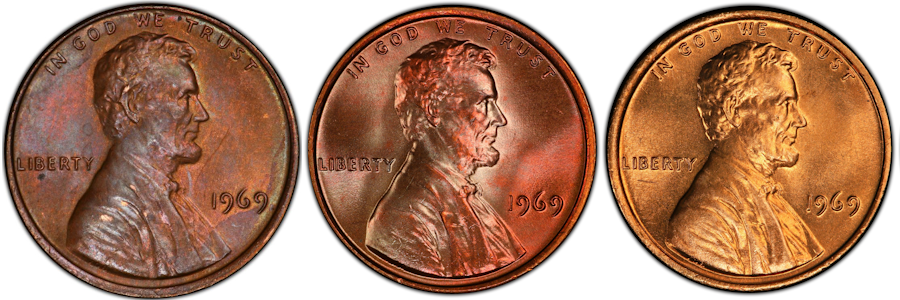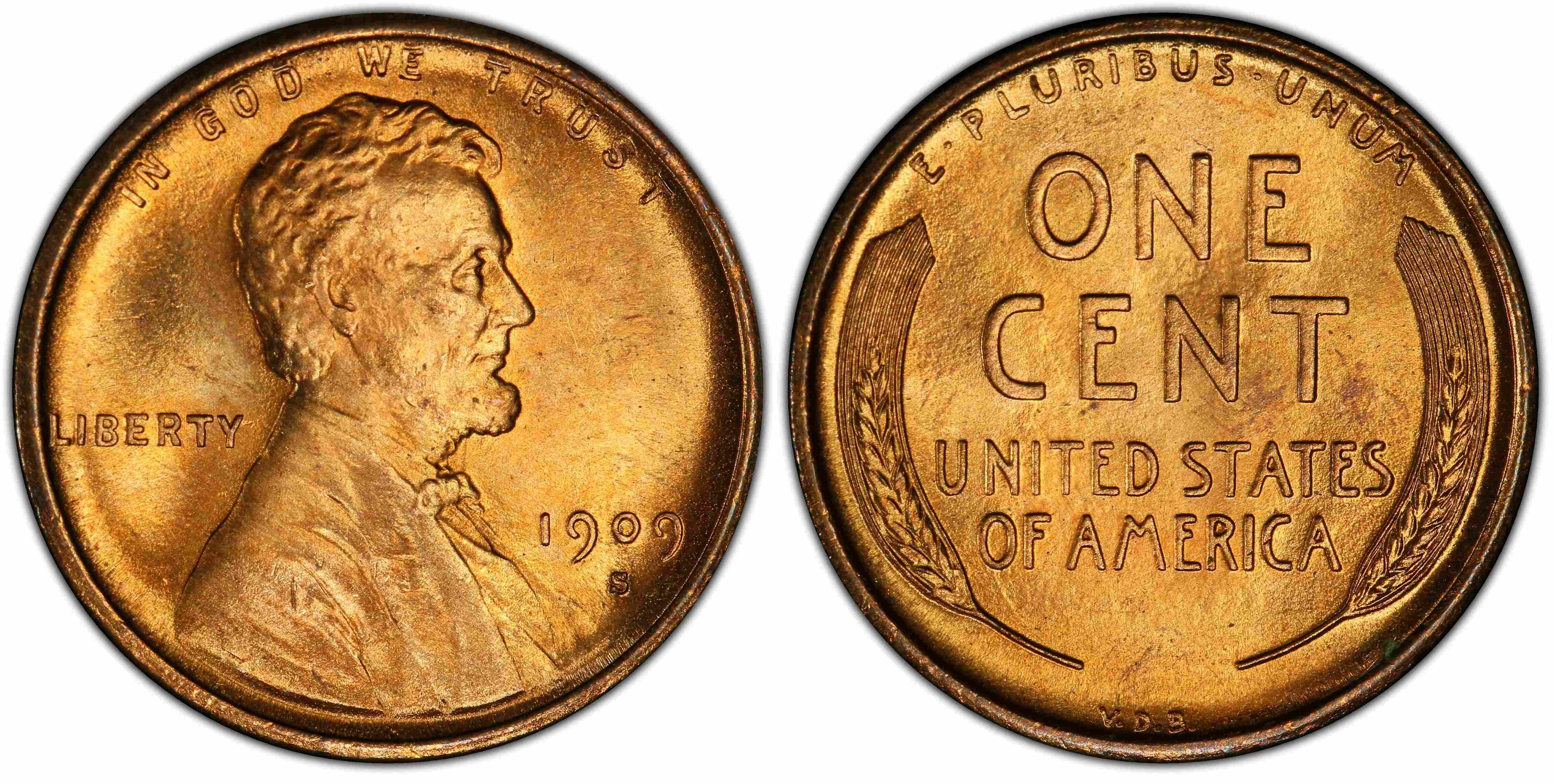1909-S VDB Penny Values, Varieties, and Rarities
1909-S VDB pennies are worth over $2,000 in all Mint State grades. They can even reach six-figure dollar amounts!
The famous 1909-S VDB Lincoln cent is the undisputed “key date” of the entire series. The tiny 484,000 mintage and the drama surrounding VDB cents have ensured that demand for the 1909-S VDB cent has outstripped supply from the very first day. If not for the widespread hoarding of the coin when it was first released, the surviving number of 1909-S VDB pennies would certainly be much lower than they are.
1909 was the 100th anniversary of Lincoln’s birth, with celebrations and commemorations across the nation. One of the most-anticipated events was the release of a new penny design to be issued to mark the occasion. By the time the Lincoln cent was released on August 2nd, the anticipation had become a mania.
Demand for the coin skyrocketed when production was suspended just three days later. Newspapers stirred up public agitation over Lincoln cent designer Victor D. Brenner including his initials on the coin's reverse.
The drama led the Secretary of the Treasury to order VDB letters to be removed from the coin. Production resumed on August 12th, using dies without the initials. The sudden removal of the initials ignited a craze to hoard as many 1909-S VDB cents as they could get their hands on.
NOTE: THE RARITY AND VALUE OF THE 1909-S VDB LINCOLN CENT MAKE IT INSANELY POPULAR WITH COUNTERFEITERS!
1909-S VDB Lincoln Penny Prices
MINT STATE GRADES
BROWN
RED-BROWN
RED
DID YOU KNOW?
Coins are graded on a 70-point scale, where 1 is so worn as to be almost unidentifiable, and 70 is perfect, with no damage or blemishes visible even under magnification.
RD, RB, BN: What Do They Mean?
Lincoln Cents are not only graded by condition but also by how much of their original color remains. There are three classifications: Brown (BN), Red-Brown (RB), and Red (RD).

1969 Lincoln Cents graded BN, RB, and RD (PCGS)
These definitions are more subjective than the physical grades laid out in the 1–70 coin grading scale.
Circulated cents and uncirculated ones exposed to air develop a brown, sometimes chocolatey color. All things being equal, cents graded BN are far less desirable to collectors than RB or RD coins.
Red-brown cents have a good portion of their original luster remaining. The exact amount of red remaining for a coin to be considered RB can differ among grading services. Some collectors find that certain RB cents can have more eye appeal than a “better” RD coin of the same condition grade.
Red coins have almost all their original luster present. For older cents, this is usually only possible for new coins kept in rolls or airtight containers or from unopened Mint Sets.
Finest Known 1909-S VDB Lincoln Cents and Auction Records
1909-S VDB BROWN CENT VALUE
AUCTION RECORD: $10,000 for MS-66 BN (2022: eBay)
FINEST KNOWN: MS-67 BN (PCGS); MS-66 BN (NGC)
1909-S VDB RED-BROWN CENT VALUE
AUCTION RECORD: $19,200 for MS-67 RB (2021: Heritage)
FINEST KNOWN: MS-67 RB (PCGS); MS-67 RB (NGC)
1909-S VDB RED CENT VALUE
AUCTION RECORD: $168,000 for MS-67 RD (2022: Stack’s Bowers)
FINEST KNOWN: MS-67 RD (PCGS); MS-67 RD (NGC)
1909-S VDB Lincoln Cent Varieties
Variety coins have had something happen to the die before the coin is struck. (Anything that happens to the penny after they are ejected from the coining press is referred to as “post-mint damage.”) Errors occur due to accidents during the minting process.
Common mint Varieties include Doubled Die on Reverse (DDR), Doubled Die on Obverse (DDO), and Repunched Mint Mark (RPM).
There are no major varieties of the 1909-S Lincoln cent.
Error Coins
Error coins result from a mechanical malfunction of the coin press or particular die, or a defect or mistake in the coin blank itself. (Anything that happens to them after they are ejected from the coining press is referred to as “post-mint damage.”)
Common error coins are:
Read more about the value of Lincoln cents from the experts at Gainesville Coins:
1909 VDB Penny Value, Errors, and Varieties
10 Most Valuable Pennies: Are These in Your Pocket Change?
1912-S Penny Values, Errors, and Rarities
1964 Lincoln Penny Values, Errors, and Rarities
1943 Steel Penny Value: How Much They Are Worth Now
1905 Indian Head Penny Values, Errors, and Rarities

Steven Cochran
A published writer, Steven's coverage of precious metals goes beyond the daily news to explain how ancillary factors affect the market.
Steven specializes in market analysis with an emphasis on stocks, corporate bonds, and government debt.

